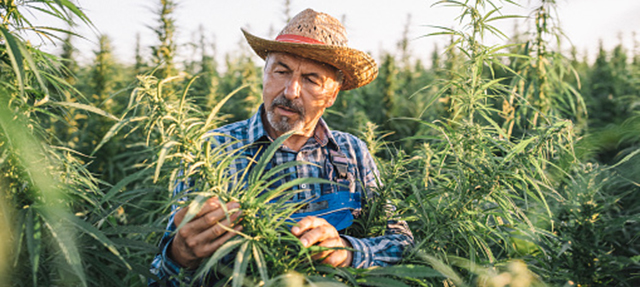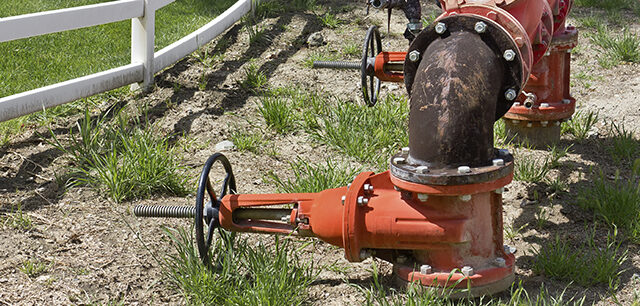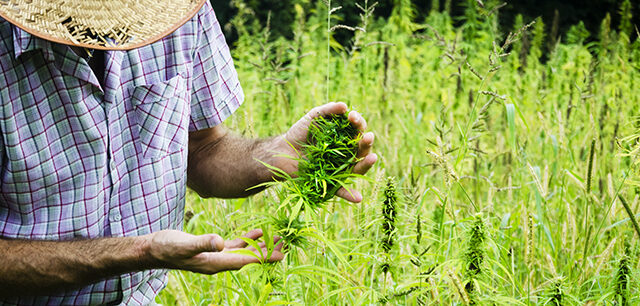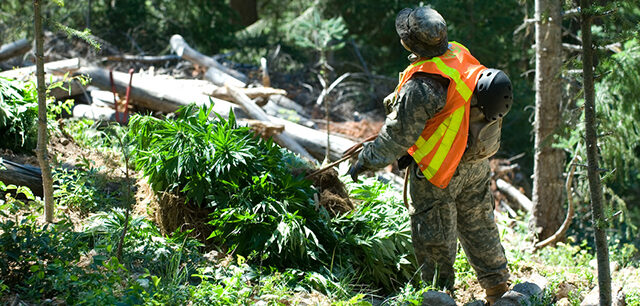The rise in legal cannabis cultivation in California has brought a once-clandestine industry out of the shadows. Legalization has begun to illuminate the industry’s impacts on ecosystems and water—a particularly fraught issue as the state confronts a new drought. We spoke with Van Butsic and Ted Grantham, co-directors of UC Berkeley’s Cannabis Research Center and adjunct fellows at the PPIC Water Policy Center, to better understand how cannabis cultivation affects the state’s water.

Van Butsic
What is the extent of cannabis cultivation in California?
Van Butsic: We’re approaching 8,000 legal cannabis farms in the state, including permitted indoor and outdoor growing facilities. But most farms statewide are not permitted. To give you a sense of scale, we estimate that Humboldt and Mendocino counties alone had around 15,000 illegal farms in 2018. Permitted farms tend to be much larger than unpermitted farms, so by area it’s probably not as extreme as the farm numbers alone indicate
Ted Grantham: Many legacy farms that were in operation prior to state legalization are still present, especially in Mendocino, Humboldt, and Trinity counties—the so-called Emerald Triangle. Most of the state’s licensed growers are also in that area. But we’re also seeing a shift in where legal cannabis is grown—especially in the Central Coast and Southern California desert regions.

Ted Grantham
What do we know about water use for this crop?
TG: Our research hasn’t found cannabis to be particularly thirsty relative to other crops.
VB: Legal outdoor production uses about the same amount of water as a crop like tomatoes.
TG: And cannabis farms are considerably smaller than other crops—on average, about a quarter acre. So, cannabis has a very small footprint and accounts for just a fraction of the water used by California agriculture overall. We see more variability in cannabis water use than other crops, partly because cannabis has avoided the standardization of production methods that we find in large-scale agriculture.
We are concerned about cannabis water use because many cannabis farms are in remote upper watersheds that support sensitive species. There’s naturally low water availability in these headwaters, especially in the dry season, so even small diversions can have an impact on the ecosystem.
Has legalization helped reduce the crop’s impacts on the state’s streams?
VB: Consumers who buy legal cannabis sourced from a permitted outdoor farm can feel confident that it has met stringent environmental requirements.
TG: Cannabis regulations are oriented toward reducing water use impacts—including restrictions on when growers can divert from streams and requirements to use onsite storage if they rely on surface water sources. However, unpermitted farms don’t necessarily follow these practices.
It’s also important to recognize that cannabis growers hold a junior right and are the first in line to be curtailed in a drought.
What’s being done to manage water use in California’s deserts?
TG: Legal and illegal cannabis grows are expanding in the Mojave Desert region. We’ve heard from local officials that there’s been a dramatic increase in production in San Bernardino County, where cannabis cultivation is prohibited, and there are concerns over increased water withdrawals from stressed aquifers. The situation is very different in neighboring Riverside County, where it’s authorized. In many counties it’s still illegal to grow, but without a program that establishes civil penalties for unpermitted cultivation, these counties paradoxically don’t have many tools to stem illegal operations on private lands. If a grow operation is legal, the water source will be legal (and managed). For illegal grows, it is not clear where water is coming from.
How do illegal grows contribute to water quality problems?
TG: Water quality impacts from pesticides and nutrients are a major concern. But, so far, studies haven’t detected high levels of contaminants in streams, and the effects from cultivation appear to be fairly localized. Water quality may be at risk, however.
The use of rodenticides on illegal farms, especially so-called “trespass grows” on public lands, has been documented and has been shown to have significant impacts on wildlife, killing owls and carnivores that feed on poisoned rodents.
VB: One benefit of legalization is the research we’re now able to do. Most of the things we talked about today we didn’t know at all five years ago. In five more years, we’ll learn a lot more.
TG: Many growers actually support environmental regulations, although they also report that requirements are often difficult and expensive to meet. There is a real need for programs that lower barriers to compliance and offer a pathway for growers to get their permits while also ensuring strong environmental protections.






